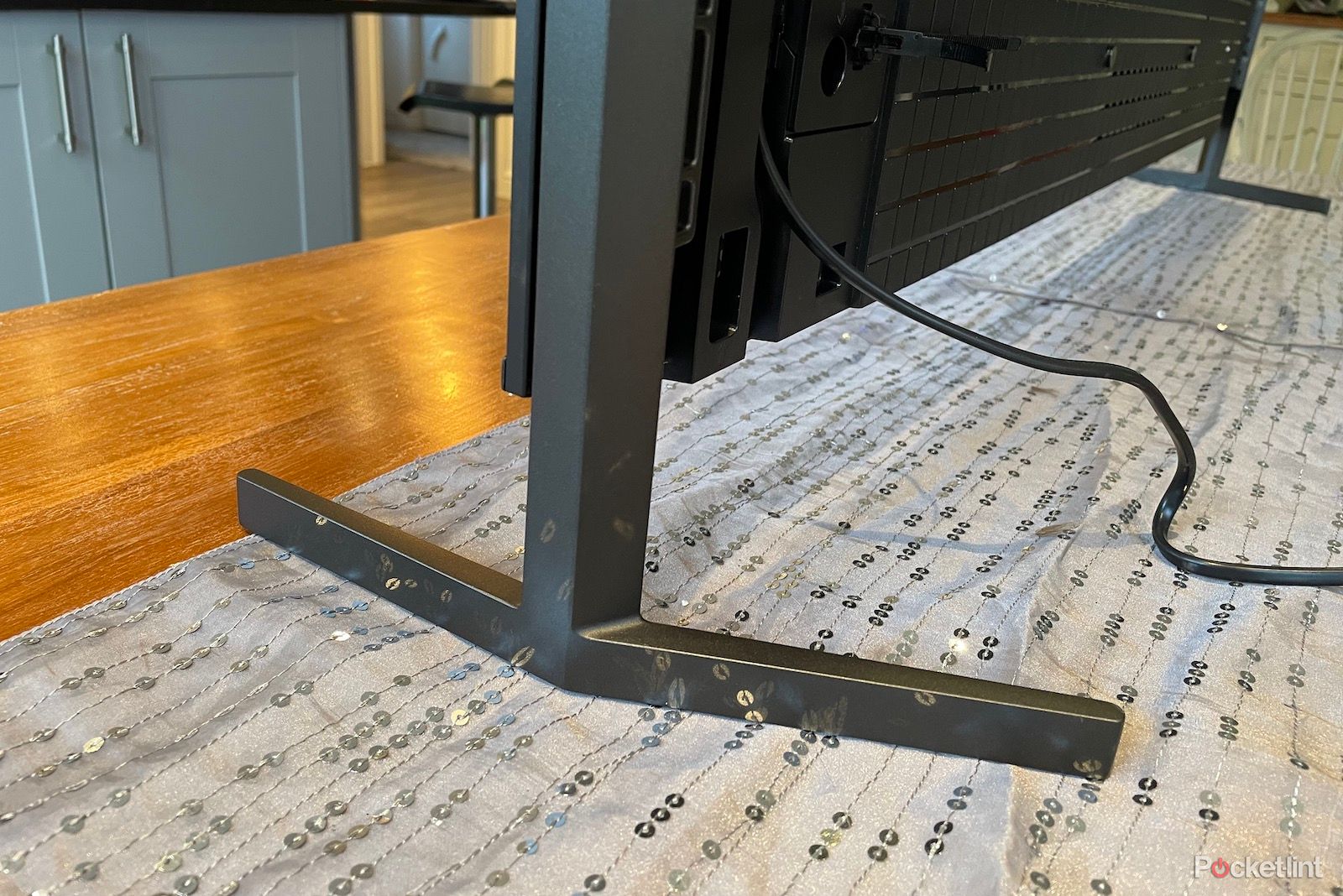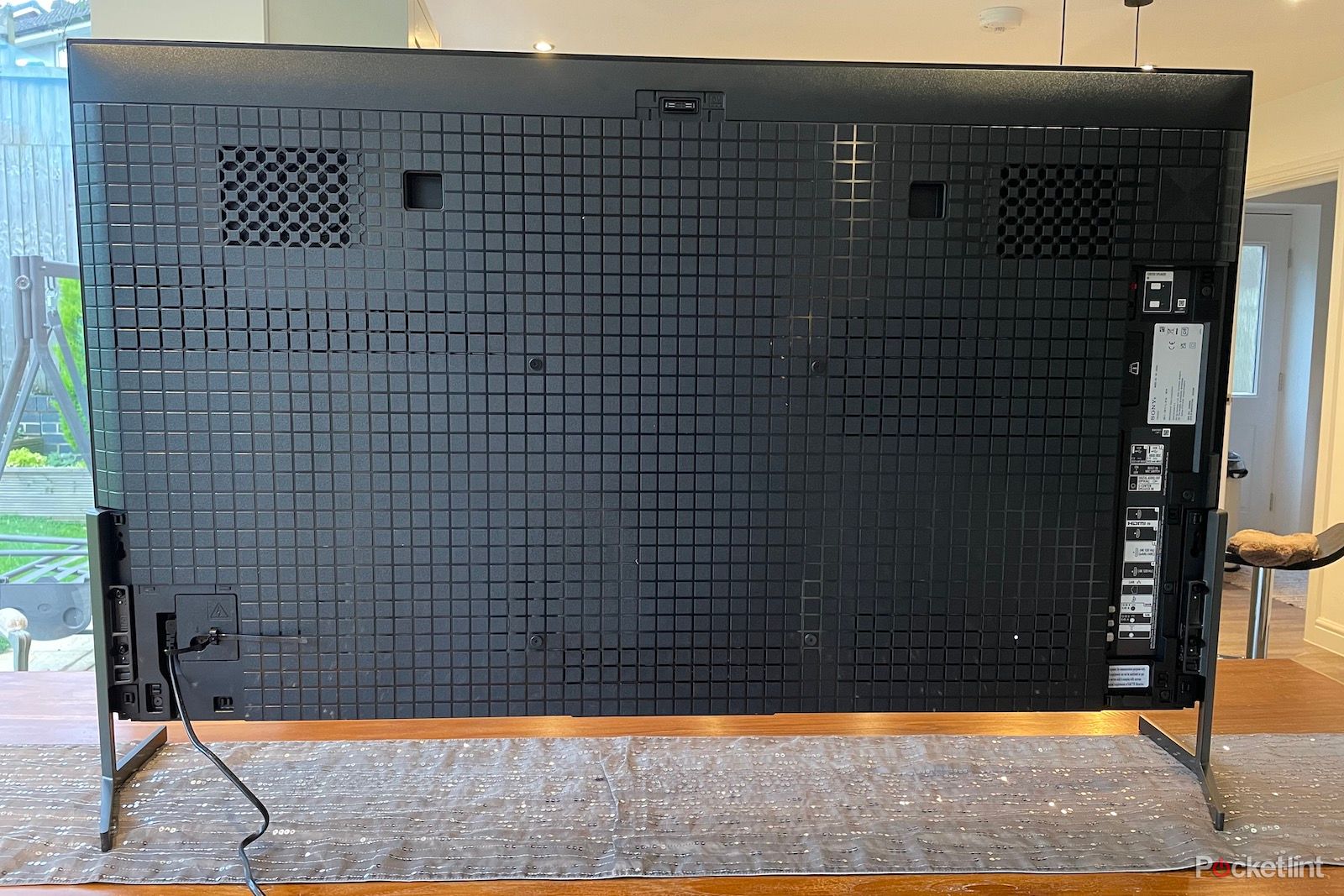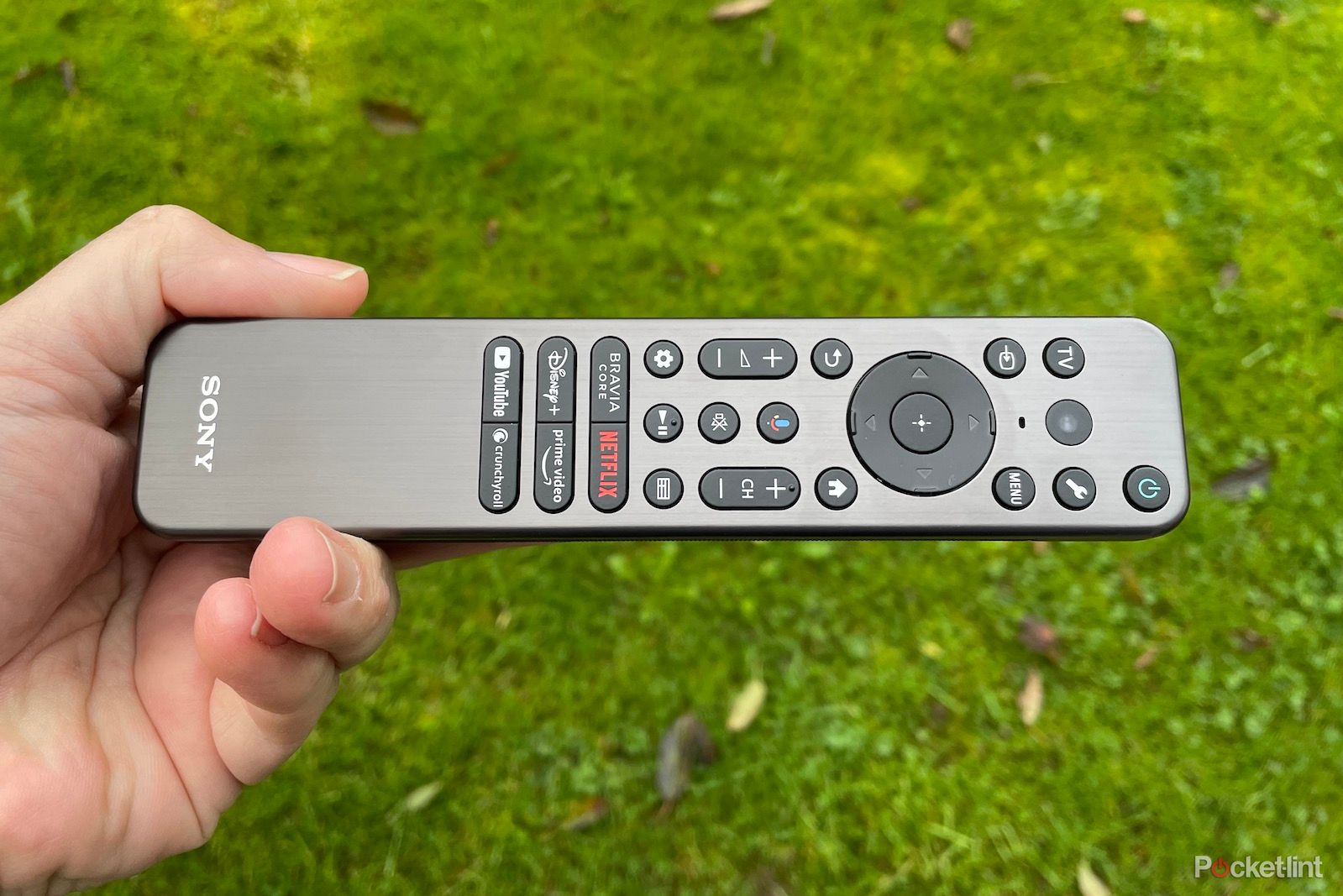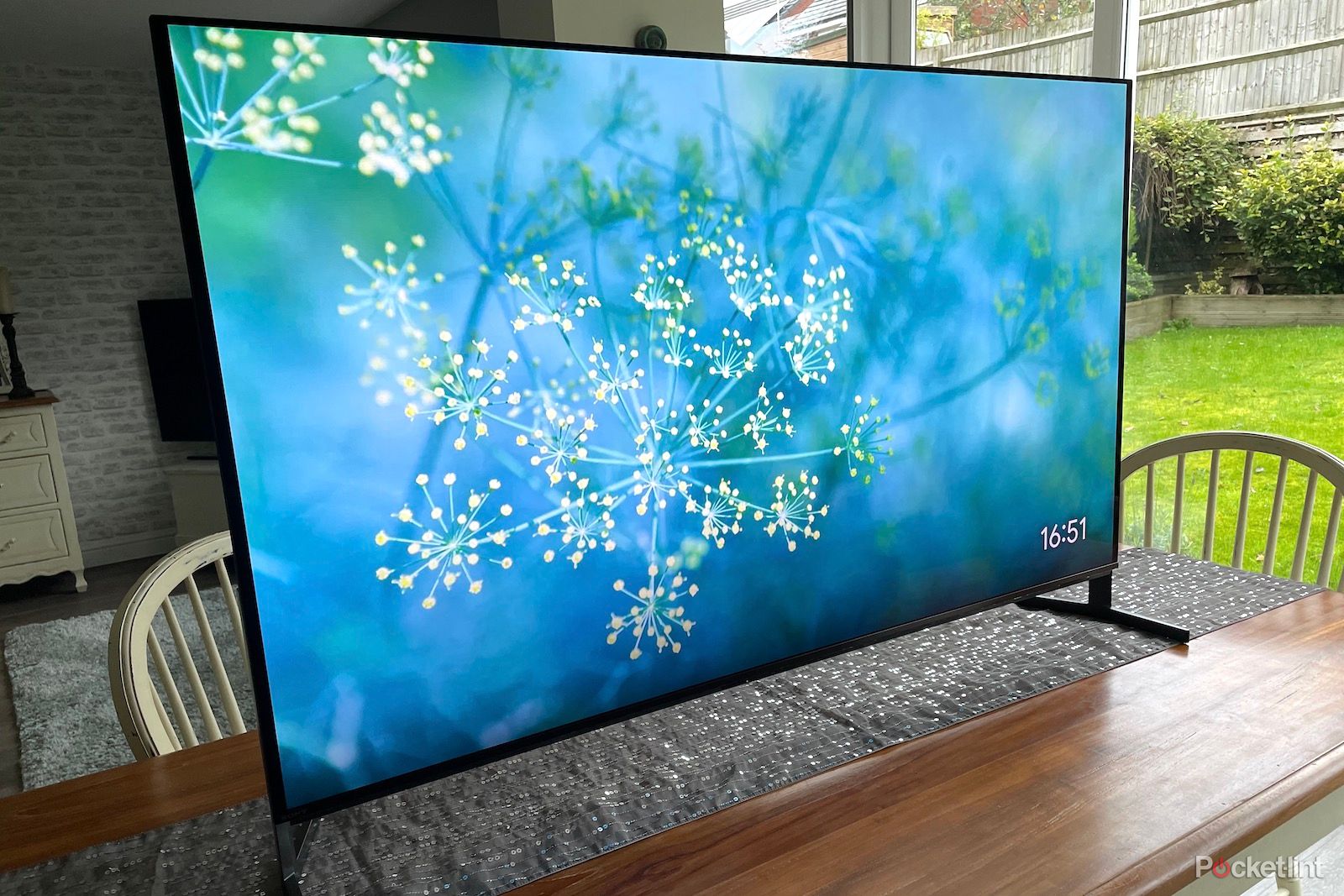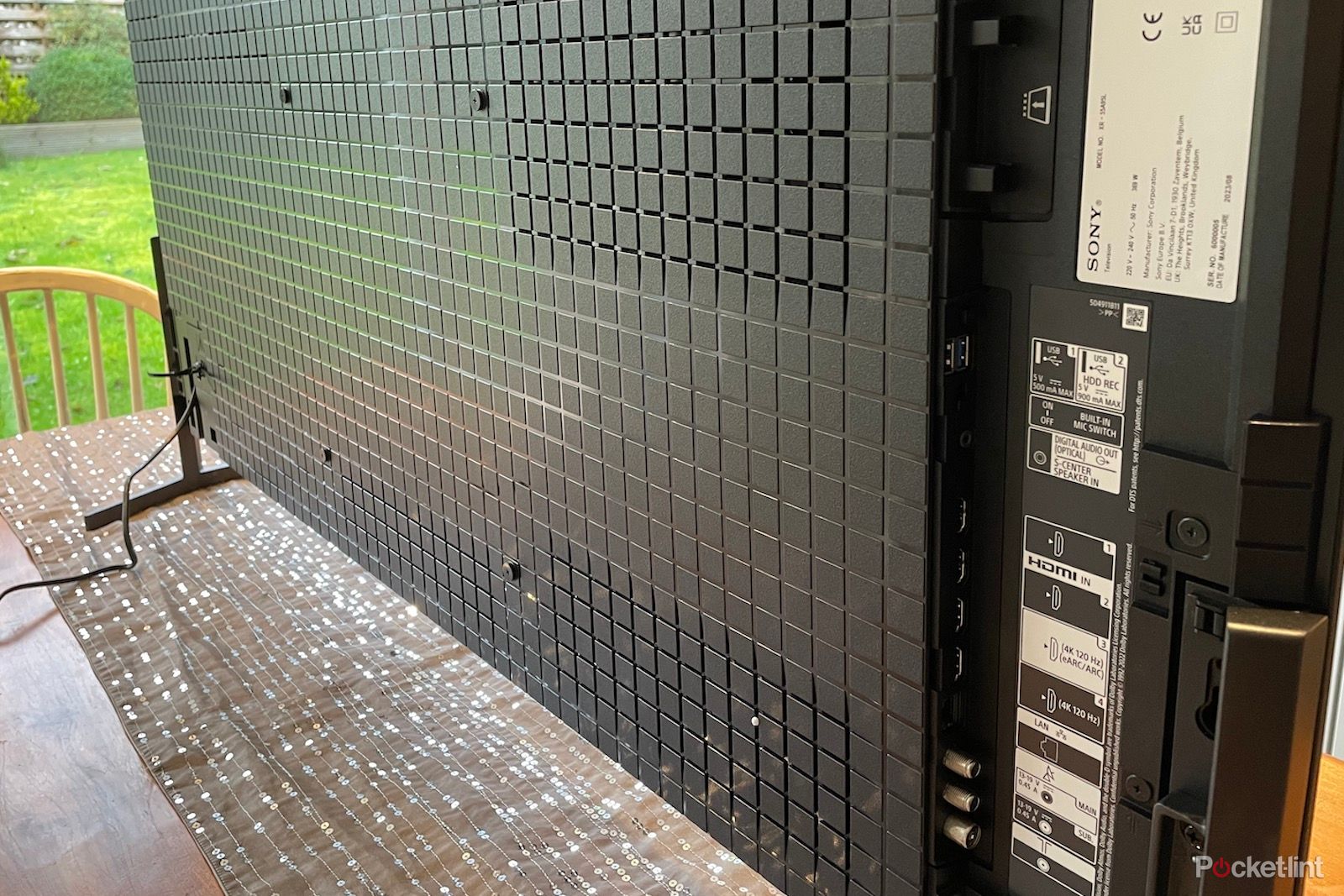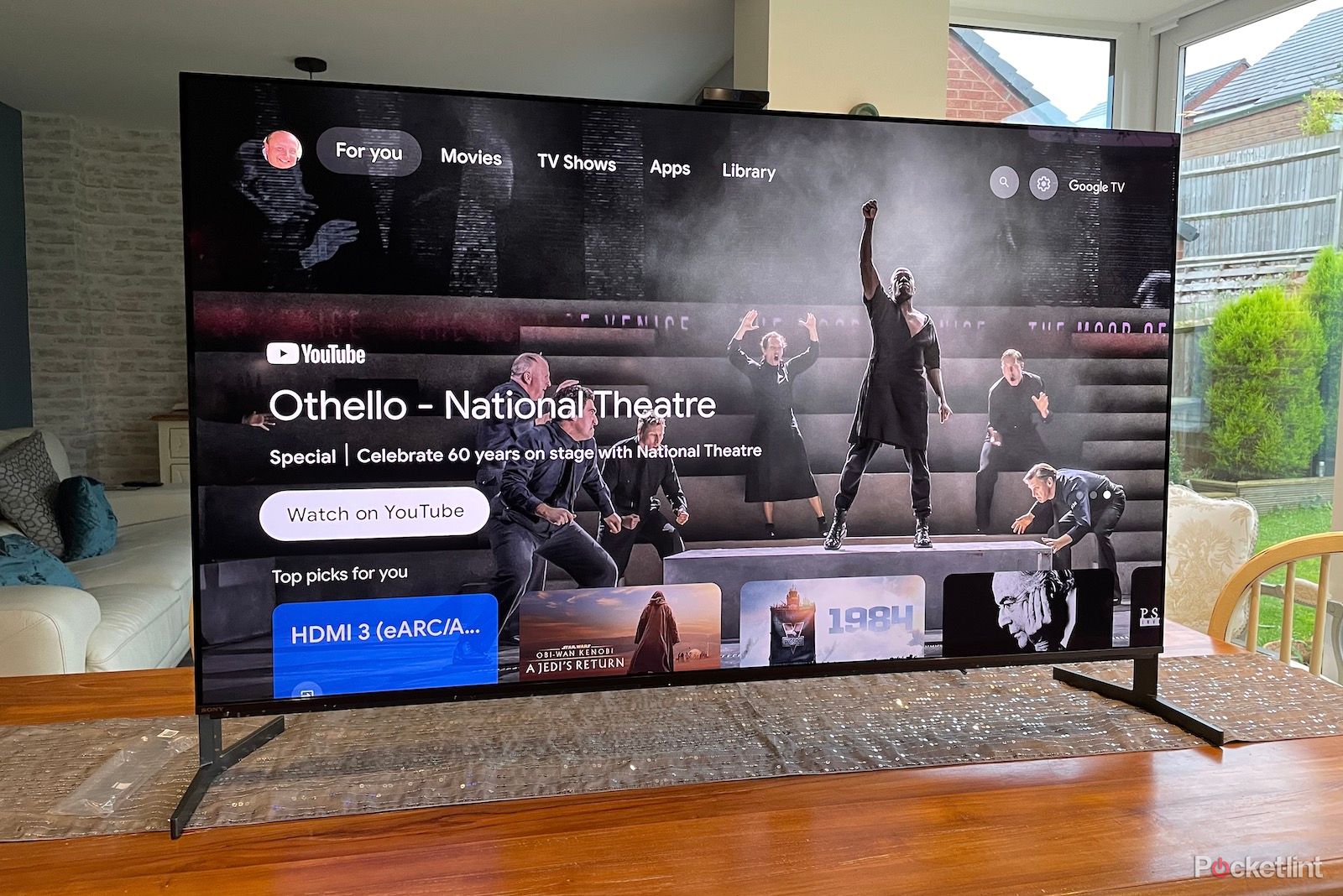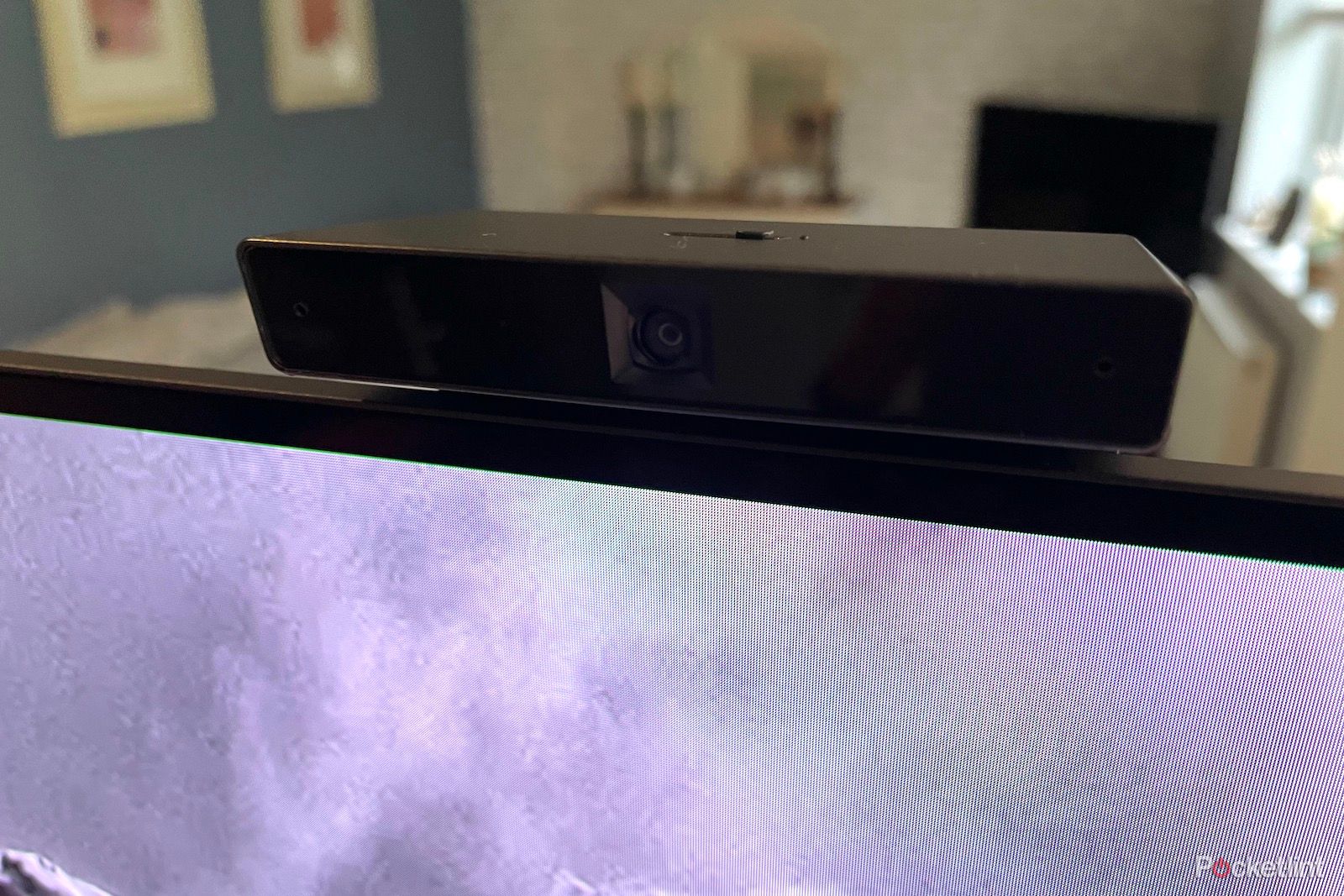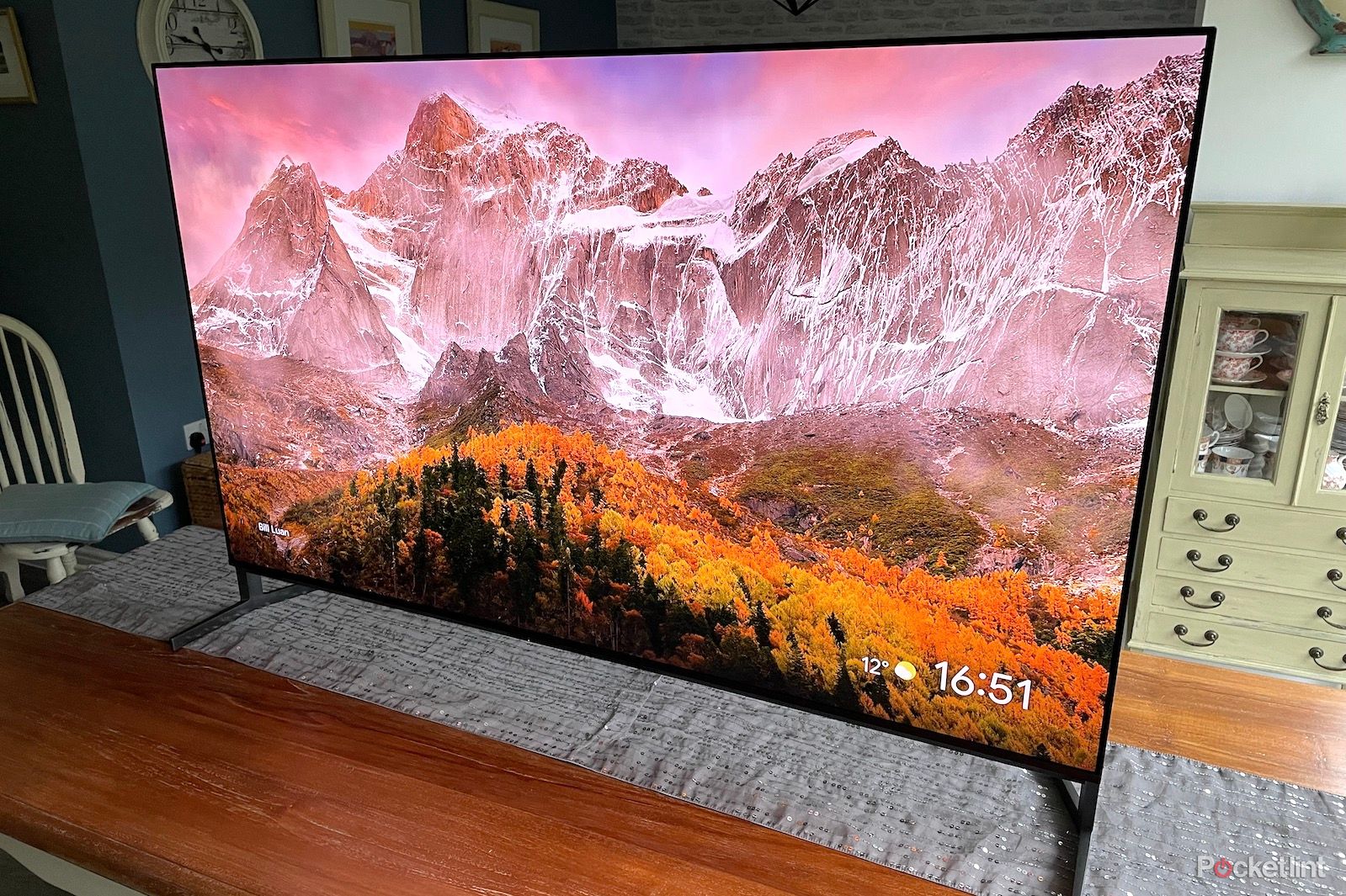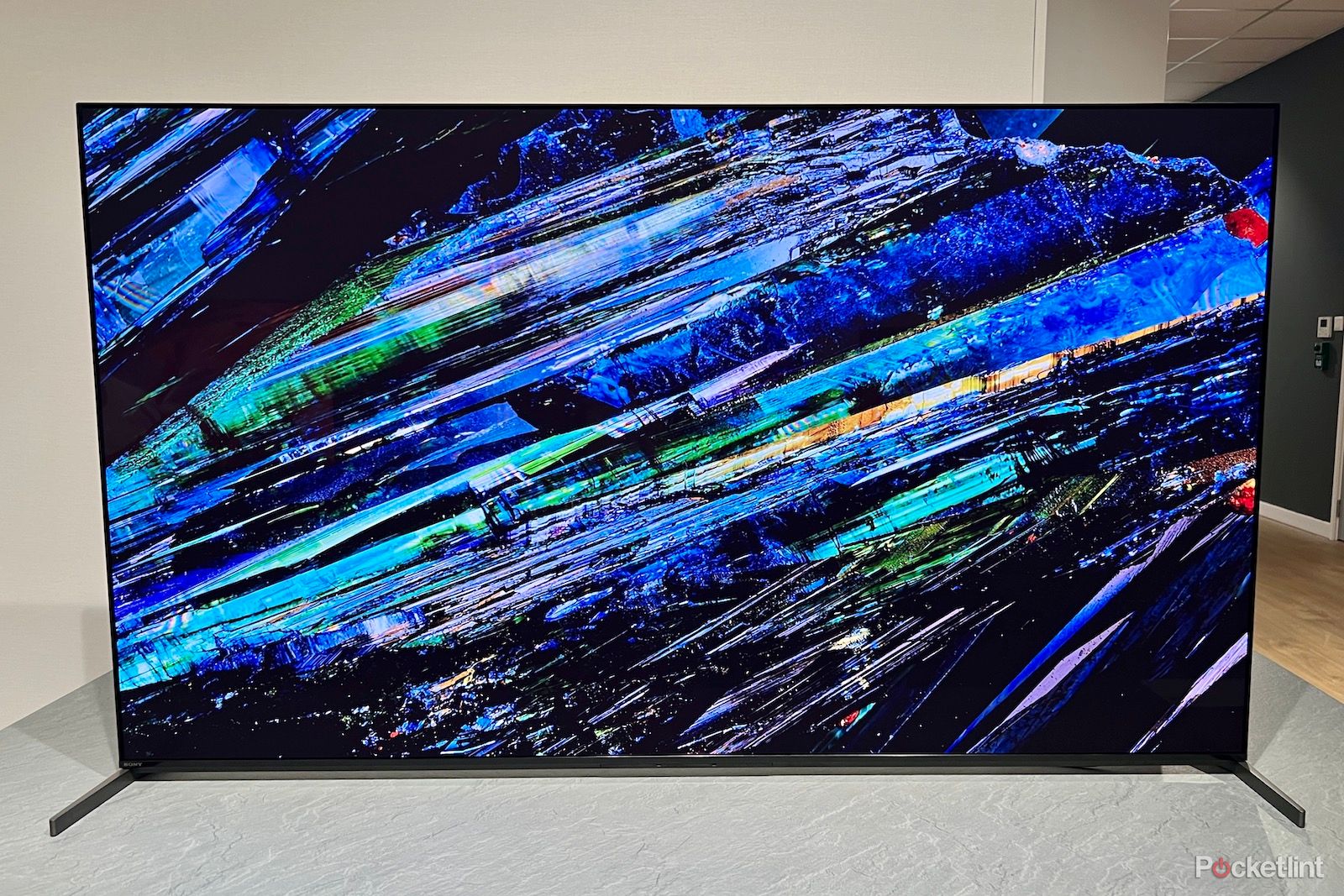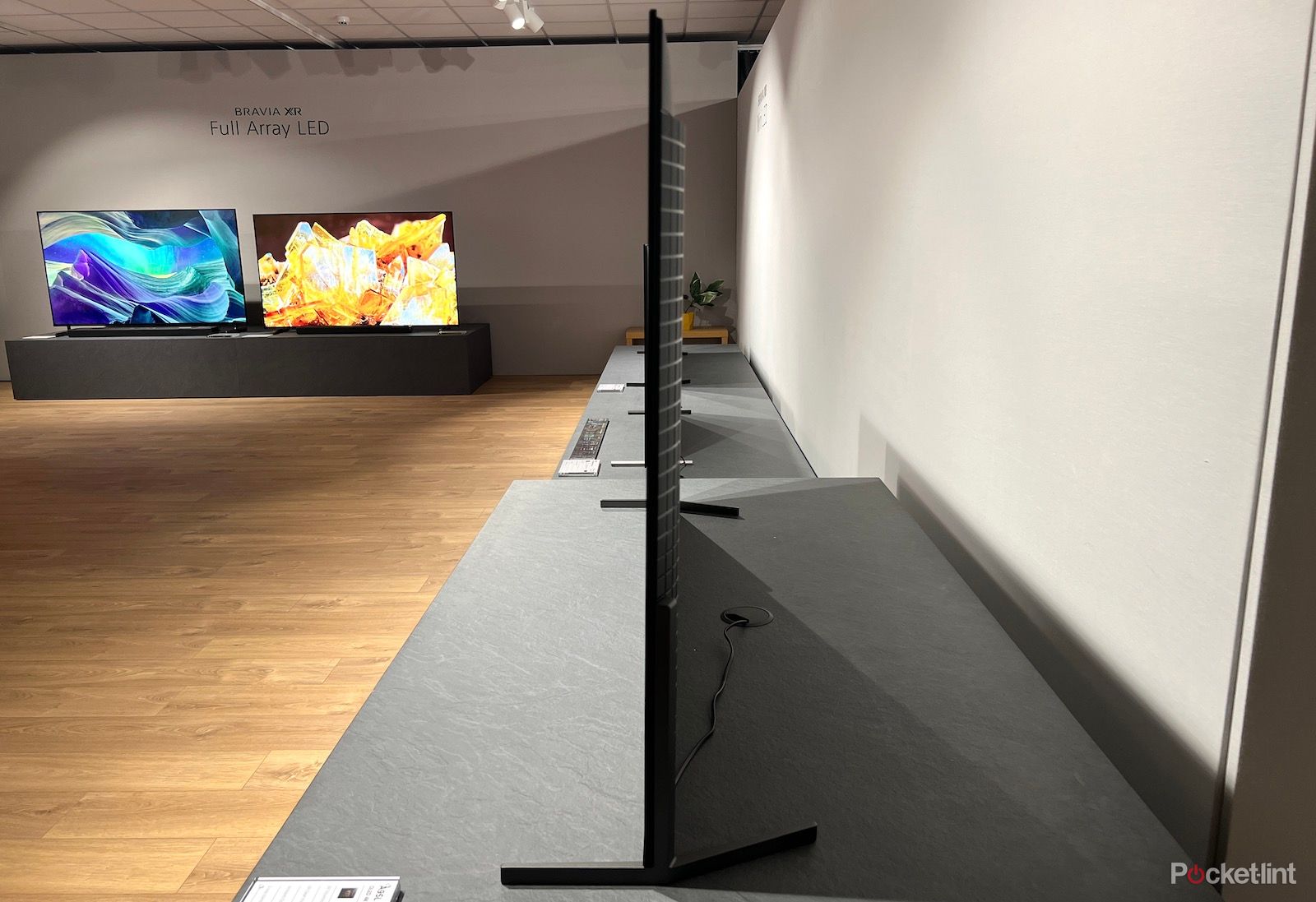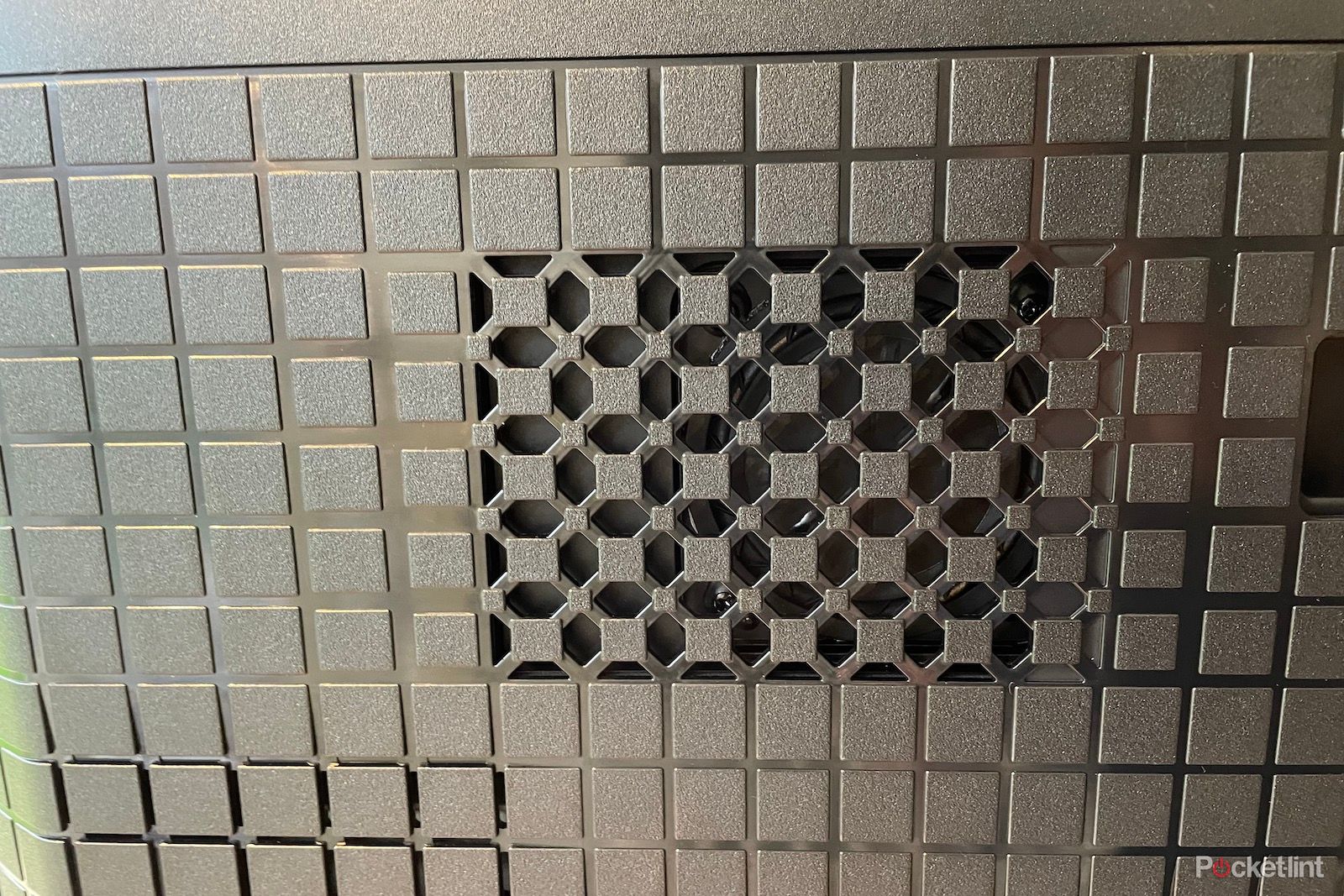As was the case when the technology debuted last year, just two brands have embraced QD-OLED TVs for 2023: Samsung and Sony. Samsung’s support was inevitable, of course, given that the South Korean brand invented the technology as an alternative to the ‘regular’ WRGB OLED TVs, made popular by LG, that it’s refused to use for more than a decade.
In truth, Sony sticking with it for another year was probably also never really in doubt either, given the ecstatic reception enjoyed by its A95K QD-OLED debutante in 2022.
With the quality of the A95K still fresh in my mind, it’s fair to say I’ve been pretty excited by the arrival of Sony’s new A95L QD-OLED set, tested here in its 55-inch variant. Especially given that it should combine Sony’s traditional picture processing prowess with the same sort of substantial brightness improvements I’ve seen with Samsung’s second-gen QD OLEDs and Sony’s most advanced gaming support yet.
Sony/Pocket-lint

Sony A95L
Editor’s choice
Powerful sound, a super-elegant design and arguably the best and most immersive pictures the TV world has ever seen add up to a superheroic return for Sony’s take on QD-OLED technology.
- Stunning colours
- Phenomenal contrast
- Potent, impactful sound
- Only two fully featured HDMIs
- Expensive compared with Samsung QD OLEDs
- Audio lag with Atmos sources
Design
Even by Sony’s now expected minimalistic standards, the 55A95L is a ‘barely there’ treat. For starters, since it doesn’t have to accommodate any ‘normal’ speakers (more on this later), the frame around the screen is practically non-existent. So much so that the set actually lives up to the ‘seamless edge’ design that Sony gives it.
The rear is pretty trim, too. Sony hasn’t gone for the sort of two-level approach many OLED TVs attempt, where an incredibly thin outer rear edge is joined by a much deeper middle section. Instead, the whole rear looks uniformly trim after a gentle angling back from the top, left and right edges.
Contributing further to Sony’s apparent desire to ensure that its flagship TV for 2023 does as little as possible to distract you from its hopefully imperious pictures are its feet. In their most elegant placement the screen sits right down on top of them, with practically no air between the bottom of the screen and the surface you’ve placed the TV on.
They’re tucked right under each bottom corner so that they almost look like extensions of the screen’s frame, with a slight angling in of each foot in front of and behind the screen to creates a gentle ’embrace’ effect – slightly softening the design’s otherwise very angular lines.
Throw in one of Sony’s distinctive grid patterns, etched into the 55A95L’s rear panel and detachable panels for covering the connections bay and you’ve got a really premium-feeling, 360-degree look.
While the foot placement described above is the most elegant option, Sony also thoughtfully allows you to attach the feet so that the screen is raised up a couple of inches. Something you would want to do, of course, if you want to use the TV in conjunction with a soundbar. Unfortunately there’s no option on the A95L to place the feet closer together so that the screen could stand on a narrower bit of furniture – which may be tricky if you plump for the 77-inch version of this set.
The 55A95L is the first – and long overdue – TV from Sony that truly supports all the latest cutting-edge gaming features you’d actually expect the TV brand that makes the PlayStation 5 to deliver. In an ideal world all four of its HDMIs would support such gaming features, rather than just two, but after such a long wait for such comprehensive gaming support I’m inclined to be happy with what we’ve got.
The 55A95L’s talented HDMIs are joined by a couple of USBs and a centre speaker cable input, which is there so that the TV’s speakers can become the centre channel in a wider external speaker set up – more on that later.
Shipping with the 55A95L are two separate remote controls: one rather basic, plasticky one with a full numeric pad crammed into it, and one much more refined and well made metallic-finish one without numeric buttons. This second option is comfortable to hold with well laid out buttons, and best of all its buttons are illuminated by backlighting as soon as you pick it up. Great for controlling the TV during night-time movie sessions.
Features
At $2798/£2,999 the 55A95L is very expensive for a 55-inch TV. Samsung’s flagship 55-inch QD-OLED TV for 2023 – the Samsung S95C – by comparison, is only $1,899/£1,899 at the time of writing, while LG’s 55-inch G3 OLED, with its new brightness boosting Micro Lens Array technology, also only costs $1900/£1,900.
This tough pricing start for the 55A95L, though, won’t necessarily deter the sort of AV enthusiast Sony is clearly targeting its latest TV at. Such AV fans will pay for quality – so long, of course, as that quality is actually there. To which end the 55A95L offers a compelling picture quality story.
The QD-OLED nature of its screen, for starters, sees a blue OLED light shone through green and red layers of Quantum Dots to create its colours. A pure RGB approach which avoids the white element found with regular OLED screens, and so has the potential to deliver richer colour saturations. Especially in bright picture areas.
All OLED screens use self-emissive pixels, of course, enabling them to deliver peerless black levels and local contrast as well as exceptionally wide, effective viewing angles. This joins Sony’s latest Cognitive Processor XR, which, alongside handling Sony’s class-leading motion processing system, adds an XR Clear Image system for improving the way noise is dealt with and resolution enhanced when upscaling sub-4K sources.
New QD-OLED-specific contrast and Triluminos colour enhancements join a processing system that’s already widely acclaimed for its ability to ‘rebuild’ images so that they more closely resemble the way the real world looks – all with the aim of getting images as close as they can to Sony’s professional-grade mastering monitors.
This latter point will be of particular interest to many of the sort of AV fans willing to pay a premium to pursue their home entertainment obsession to the Nth degree. And the use of the pure RGB QD-OLED technology on paper, at least, has the potential to help the A95L get closer to that of its mastering monitors than any previous Sony TV.
Returning to the 55A95L’s new (for Sony) gaming features mentioned in passing earlier – now two out of four of its HDMIs can handle 4K/120Hz HDR graphics, variable refresh rates and Dolby Vision with, crucially, no need to have to choose between this key feature triumvirate as you do with every other Sony TV series this year.
The Dolby Vision Game support isn’t actually active yet, despite how late in the year the TV has arrived, but it will be unlocked later by a firmware update.
The 55A95L also supports, of course, the Perfect for Playstation system, meaning that a PS5 connected to it can tell which Sony TV it is and automatically select its best HDR output settings accordingly – as well as automatically turning the TV to its fast-response Game preset when a game (rather than video) source is detected.
The fastest response that Game mode can deliver is a very respectable (though not quite class-leading) 16.7ms with 1080p sources, which reduces to just under 8ms with 120Hz titles.
The 55A95L carries Sony’s new Game Bar menu, which becomes available when the TV is running in its Game mode. At the time of writing this contains such gaming aids as a virtual crosshair, the option to raise the brightness of dark areas, and a Motion Blur reduction option that sacrifices a little input lag speed in return for slightly smoother motion when playing games with relatively low frame rates.
Although it’s not available at the time of writing, Sony is additionally promising that it will be adding a mode for shrinking the size of the image in Game mode, so that serious players of fast reaction based games can take in the entire picture in one glance more easily.
The 55A95L’s smart features are carried, inevitably given this is a Sony TV, by Google TV. This is fine as far as it goes; Google TV’s interface is more attractive, intuitive and customisable than the old Android TV system was, and it works as slickly as you would hope considering this is such a high-end TV with Sony’s most advanced ‘brain’ yet.
There is, though, a problem at the time of writing for UK users in the shape of no support for either Freeview Play or Sony’s more customary Youview ‘umbrella apps’ for the UK’s terrestrial broadcaster catchup services.
In fact – as seen on the Philips OLED808 set that uses the same Google smart TV system – there’s no sign of BBC iPlayer, ITVX, All4 or My5 apps that many UK households would likely expect to find as standard on any UK TV these days, never mind one as high-end as the 55A95L.
I wasn’t able to confirm whether these services would be coming to the TV at the time of writing, so you may need to factor in a Fire TV stick, Apple TV 4K or similar to get these apps if you need them.
The big ‘international’ apps, such as Disney+, Netflix, Prime Video, YouTube, and Apple TV are, present, of course, along with Sony’s own Bravia Core service. This movie streaming service can support stream rates of up to 80Mbps to hopefully deliver cleaner, less compressed images, and by buying the 55A95L you will have earned yourself 10 free premium (as in, newly released) movie purchases and a two-year subscription to the service’s back catalogue content.
The 55A95L adds an unusual extra angle to its smart features courtesy of its included Bravia Cam. This attaches magnetically to the top of the TV and as well as opening up the inevitable video conference features, also supports gesture controls, and can enable the TV to optimise its picture and sound settings based on its analysis of your seating point relative to the screen. While I didn’t personally feel much of an urge to use this camera’s features, and I doubt they’ll change your viewing experience, you might as well give it a go since it’s included.
Picture performance
The simple question we need to answer here is whether the A95L does enough to justify its pretty substantial price hike over key rivals. And the short answer is, yes, it does.
The long answer starts with an imperious contrast performance. At the dark end of things, black levels are immaculate. They’re deep, of course; that much we would expect from any OLED TV these days. The 55A95L, though, combines these deep black levels with arguably the finest level of control I’ve ever seen from a TV. There’s no hint of noise, for instance, as the TV shows near-black picture information – one of the trickiest things for OLED screens to achieve. Nor is there so much as a hint of instability in dark scenes, and perhaps best of all, the 55A95L’s handling of subtle shadowy details and dark colours is as good as I’ve seen.
You always feel entirely confident that the screen is showing you just the right amount of subtle picture information in dark areas and scenes, leaving no detail ‘crushing’ in dark corners but also not bringing out parts of dark areas with more emphasis than they were designed to have.
This excellent shadow detailing ensures that dark scenes look as three-dimensional and immersive as bright ones, and fans of Dolby Vision will be delighted to hear that this immaculate shadow detail performance holds good with Dolby Vision sources. There’s no evidence of the dark scene detail crushing with Dolby Vision I’ve seen on quite a few other TVs over the past year or two.
The black bars above wide aspect ratio remain totally black at all times, with no light bleed of the sort you get with pretty much all LCD TVs to some extent.
Making the 55A95L’s black level prowess all the more lovable for home cinema fans is the way all that dark detail and inky blackness co-exists alongside much brighter light peaks, and much more vibrant colours than we got from the already excellent A95K last year. The gleams in actors’ eyes, reflections of sunlight on glass or metal, distant lights in windows or candles and torches lighting dark passageways… all these intense treats of good HDR masters are rendered with gorgeous intensity by the QD-OLED panel, with none of the dimming or surrounding greyness that you’d expect them to cause with even the very best LCD TVs.
Maybe even better in terms of delivering a consistent, and therefore more immersive, viewing experience is how much extra brightness the 55A95L manages to hold onto during very bright scenes compared with its predecessor. This helps such scenes feel more realistic and refined, as well as helping pictures achieve an almost uncanny three-dimensionality thanks to the extra range of light, shade and colour all this expanded, but brilliantly controlled luminance makes possible.
There’s plenty of subtle shading and colour toning to be seen in peak bright highlights too, showing that the improved brightness over the A95K is entirely natural and down to the second-gen QD OLED panel rather than being forced by over-enthusiastic tone mapping.
The 55A95L’s new level of magnificence also owes a debt to QD OLED’s pure RGB approach to colour. You could see the extra richness QD-OLED enables on last year’s A95K, especially in relatively pure reds and yellows. But the extra brightness of the 55A95L makes this purity and the ability to retain high saturation levels – even in very bright areas – more noticeable, and more stunning.
While colours look more vibrant than they did on the A95K, they also never look cartoonish or overblown. On the contrary, the subtlety of blends and naturalism of tones – even when it comes to tricky skin shading and low-lit backgrounds – is never less than a joy to behold.
All of this stunning control of light, colour and contrast plays into an emphatically crisp and detailed 4K image that completes the way the 55A95L’s images draw you in. Even 4K discs I hadn’t particularly thought much of before, typically end up looking like best cinematography Oscar winners by the time the 55A95L’s worked its magic on them. Discs I’ve always thought looked great? They are elevated to another level.
The remarkable picture processing does a stellar job of upconverting HD pictures to the screen’s native 4K pixel count, too. It adds detail and that distinctive three-dimensionality that I’d say is ultimately the 55A95L’s biggest distinguishing feature, while also effortlessly detecting and removing source noise.
Sony’s now pretty much legendary motion prowess is again on hand to ensure that none of the lovely detail and nuance of the 55A95L’s images is lost in excessive judder or blurring during even the most action-packed shots.
Throw in to the mix almost infinitely wide viewing angles without any detriment to the picture, and a thoughtfully judged and varied set of picture presets, with something to please pretty much every taste, and I’m both running out of superlatives for describing the 55A95L’s pictures and struggling to find anything negative to say about them.
At a push I’d say that the Vivid preset in both standard HDR10 and Dolby Vision modes can come on way too strong at times, causing the usually immaculate colours – especially skin tones – to become over-wrought and unnatural, and the contrast to become too extreme. Though I’d still suggest watch HDR content in Vivid mode at least once, for a few minutes, if only to get a fuller sense of just what Sony’s latest QD-OLED screen is capable of in terms of its full brightness and colour extremes.
It’s also worth mentioning that in its more ‘sensible’ presets the 55A95L doesn’t push its peak brightness quite as hard as Samsung’s S95C QD OLED TVs do. Measured on a white HDR window occupying 10 per cent of the screen area, for instance, the Sony 55A95L reaches 1337 nits in its Professional (most accurate) setting, which drops to 1260 nits in its attractive and default Standard mode.
In contrast, Samsung’s S95C QD-OLED hit 1375 nits in its Movie mode with the same test signal, and 1400 nits for its default Standard settings.
The differences in the relatively accurate Cinema settings don’t leave Sony trailing far behind its Samsung rival, though, in truth. And if taking a slightly more measured approach to brightness has contributed to the extra levels of precision, balance and sheer cinematic quality the 55A95L’s pictures manage to find, it\s a small sacrifice that I’m more than happy to make.
However, I should add that if you have a particularly bright room to contend with, a number of this year’s Mini LED TVs can go a fair bit brighter still than the 55A95L – though without, of course, the same level of light control.
Sound performance
The 55A95L backs its jaw-dropping pictures up with a seriously accomplished sound system, too. As with all Sony OLED TVs, it is built around an Acoustic Surface Audio system. Which means the screen itself is used to generate the sound, using (in this case) a pair of actuators to vibrate the screen and two rear subwoofers to inject the bass.
The TV carries Dolby Atmos decoding, too, which plays nicely with the Acoustic Surface technology in helping to create a soundstage full of detail and impact.
It can get remarkably loud for a TV that has no visible speakers, and unlike the sound of most slim-design TVs, the sound pushes forward into your room, making it more impactful and immersive. Details are clear and well placed on the screen, too, right down to voices speaking from different parts of the screen. All of which proves once more just how effective the Acoustic Surface technology can be.
The subwoofers manage to deliver much more bass depth and volume than I’d imagined they’d be able to with so little rear panel depth to work with. There is a limit to their capabilities, thoug – the epic bass drops at the start of Blade Runner 2049 cause the subwoofers to crackle and spit – almost like someone’s frying bacon behind the TV.
Moments of sustained ultra-heavy bass like those in Blade Runner 2049, though, are actually pretty rare – even in the Hollywood blockbuster world. So for the vast majority of the time the 55A95L’s subwoofers actually do very well.
One other audio peculiarity found me having to add a little delay to the audio output of my Oppo 205 4K Blu-ray player to get the sound to sync properly with the video when playing Dolby Atmos tracks into the TV. But so long as your system allows you to adjust audio sync in this way, in case you experience the same, you should be fine.
Verdict
Sony’s sophomore QD OLED screen has done it again. By combining the considerable brightness and contrast improvements achieved by the second generation of QD-OLED panel design with an even more subtle and impressive version of Sony’s exceptional video processing system, the 55A95L manages to deliver arguably the most consistently flawless and immersive images I’ve ever seen.
There are a couple of niggles on the software front – particularly the currently missing UK terrestrial catch up apps and slight audio sync issues with Dolby Atmos soundtracks. Most people likely to buy a premium TV like the 55A95L, though, will likely be able to get round both of these small issues, leaving them free to lose themselves in the most immersive pictures in town.
Trending Products

